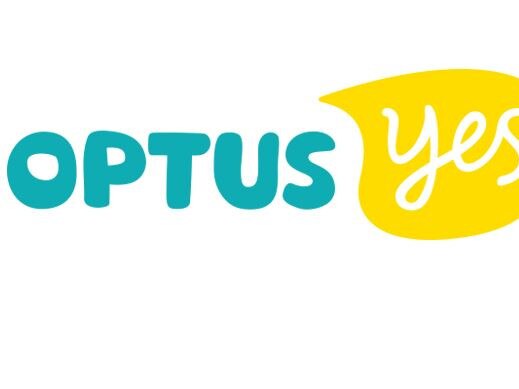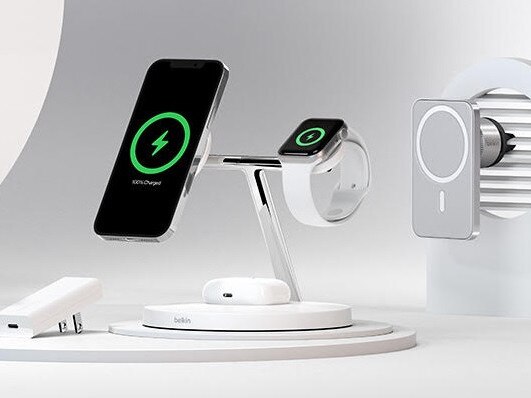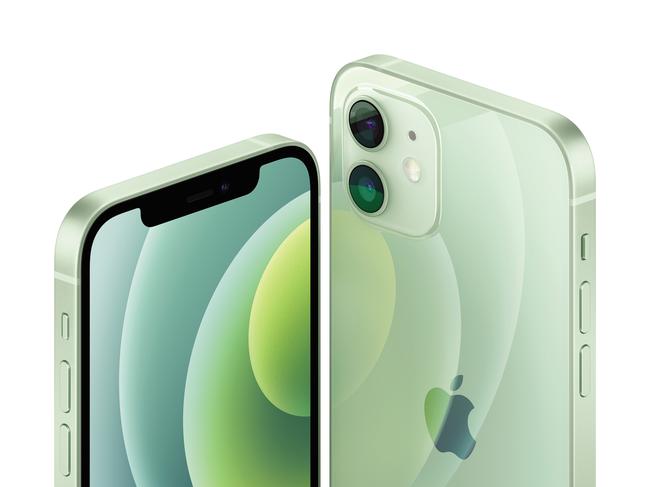Optus claims Australian record for commercial 5G
Optus has claimed the Australian record for commercial 5G speeds with a download speed of more than 2.5 gigabits per second.

Hello and welcome to The Download, The Australian’s technology blog for the latest tech news.
Chris Griffith 12:20pm: Optus claims Australian 5G commercial speed record
Australia’s two leading telcos are locked in a war over who can demonstrate the fastest 5G speeds. It’s the Grand Prix of data racing, it seems.
Today Optus has come out with guns blazing, claiming the Australian record for commercial 5G speeds with more than 2.5 gigabits per second download speed on a Samsung S20 5G device. That’s 2500Mbps or 25 times the speed of the 100Mbps plans offered with the NBN.

Optus says it will roll out 150 “ultra high speed sites” in Sydney and Melbourne by November and its mobile customers in selected areas of those cities will be the first in Australia to experience “real gigabit speeds”.
“Starting next month, Optus will unlock an unprecedented block of 5G spectrum for 5G Home and 5G Mobile customers,” it says in a statement.
Rival Telstra isn’t impressed. Group executive consumer & small business Michael Ackland says: “There are some dubious claims out there but if they want to talk about real 5G then let’s talk real 5G,” he says.
“Telstra has more than 2000 5G sites in more than 60 cities and towns and 1400 suburbs with access to 5G – that’s more streets, more houses and more places covered by Telstra 5G.
“We‘re fastest everywhere tested by independent studies – and that’s real speed, right now, not some point in the future.”
Whoever wins this telco tug of war, the sad reality is that consumers don’t get the thrilling record-breaking speeds that telcos like to brag about. Where consumers do get fast 5G, speeds can quickly drop off nearby.
I already get about 600 megabits per second on Telstra’s 5G network if I stand at the right place in our street, but the 5G quality quickly deteriorates a few dozen metres in any direction. So speed records, while fantastic, don’t tell the full story.
Chris Griffith 12.00pm: Belkin unveils MagSafe iPhone 12 accessories
Accessories maker Belkin has wasted no time announcing two iPhone 12 chargers that use Apple’s new MagSafe charging system.
Apple yesterday revealed that all four iPhone 12 models had magnets on the rear that allowed you to clip-on wireless charging devices. The main wireless charging device is like a little circle that you mount on the back of the phone. A second device called a MagSafe Duo Charger comes as a stand that charges both an iPhone and Apple watch.

Not to be outdone, Belkin has announced a MagSafe wireless charging accessory that charges three devices simultaneously – an iPhone 12, Apple watch, and a set of AirPods. It will costs $219.95. A second device magnetically holds and charges an iPhone 12 and slots into the vents on your car’s dash.
Apple’s rationale for introducing a magnetic system is that people don’t properly position their phones on wireless charging mats, and their devices don’t charge as a result. Using Near field Communication (NFC) to sense the presence of a charger, the magnetic system will guarantee that wireless charging takes place.
David Swan 11.30am: Tech industry teams up for ‘Skill Finder’
Australia’s tech industry has teamed up to help the millions of Australians on JobKeeper and JobSeeker gain digital skills, with a new platform dubbed Skill Finder.
The platform was built in response to a call to action from Industry, Science and Technology Minister Karen Andrews, who said digital skills have proven invaluable during the COVID-19 pandemic, and will only become more relevant and useful in the future.
“We need to make sure Australians have the skills they need to take advantage of the jobs that industry will create,” Ms Andrews said.
“The broad selection of courses on offer through Skill Finder are what Australia needs to drive digital transformation and innovation, ultimately delivering growth and jobs.”
The Skill Finder platform has 12 categories and 144 subcategories, featuring skills including graphic design, coding, artificial intelligence, cloud computing and more.
The resource is free, and users are guided to the most relevant courses based on information about their professional background, current expertise and future interest areas.
It was built free of charge by Melbourne technology company Balance Internet, with free capabilities provided by Adobe and Amazon Web Services.
Tech companies Atlassian, Canva, MYOB, Adobe, AWS, Google, IBM, LinkedIn, Microsoft, Salesforce and Twitter all contributed courses.
“The pandemic has accelerated digital transformation, reimagining many roles, and re-enforcing the need for an upskilled and resilient workforce,” Adobe managing director Suzanne Steele said.
“We are confident that Skill Finder will help any Australian looking to sharpen digital skills and knowledge as they re-enter the workforce or choose to change direction within it. Australian companies of all sizes will also benefit from a newly accredited digitally-skilled workforce, able to help them deliver the exceptional digital experiences brands and consumers have come to now expect.”
James Horne, Managing Director of Balance Internet the idea for Skill Finder was born out of a hackathon hosted only months ago.
“It’s incredible to think our company, operating out of extended lockdown in Melbourne, has been able to corral the calibre of Australian and global technology companies involved to deliver on the Skill Finder concept. It’s our belief that 10 per cent or even more of Australia’s total workforce could immediately upskill as part of this initiative.”
Australians can access the free courses at http://www.skillfinder.com.au.
David Swan 9.45am: Apple still playing catch-up in China
Apple is playing catch-up in China with the launch of its first 5G-enabled iPhones, seeking to supercharge uneven sales in the company’s second-biggest market — where homegrown rivals dominate.
Apple’s first 5G-enabled handset is a late entry in China, where local brands have long offered a suite of 5G-ready gadgets to use on the nation’s up-and-running next generation networks.
It launched as China’s economy is rebounding faster than the rest of the world after it contained the coronavirus pandemic, but also at a time of increasing technology nationalism among some Chinese consumers amid heightened trade tensions with the U.S.
A crucial battle for Apple is in the premium smartphone market Apple once ruled before losing ground to Huawei Technologies Co. in recent years.

On Tuesday Apple unveiled four versions of the iPhone 12 capable of connecting to ultrafast 5G networks. The new devices offer a retro design and prices roughly in line with last year’s iPhone 11, though a smaller 5.4-inch iPhone 12 Mini starts at $699 in the US.
At an Apple store in downtown Shanghai on Wednesday, the new iPhone wasn’t yet on display nor were any promotional posters, two days before the new device was available for pre-order.
Still, some Chinese consumers said they were excited about Apple’s first 5G handset, and said they didn’t expect the trade tensions between Washington and Beijing to sway their purchase decision.



To join the conversation, please log in. Don't have an account? Register
Join the conversation, you are commenting as Logout